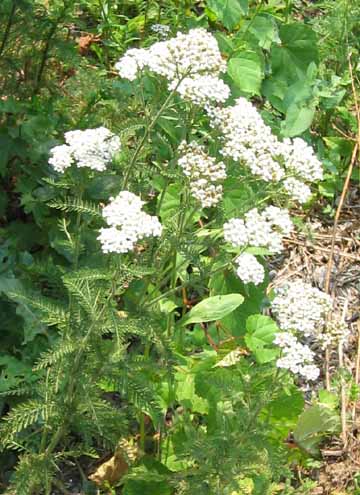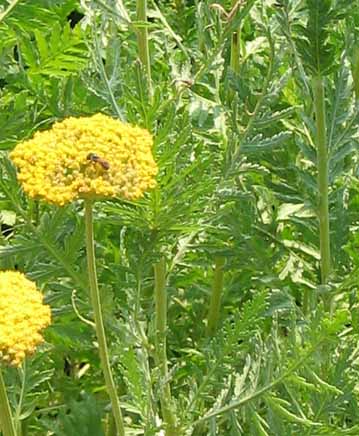Plants and People Project
Yarrow - Achillea millefolium
Also called Thousand Seal and Nosebleed. The Herbalist
Native Americans used the yarrow for colds, fevers, anorexia, and indigestion. May cause an allergic skin rash (dermatitis). Contains thujone, considered toxic. Peterson Field Guides Eastern/Central Medicinal Plants
"The earliest association of this plant having medicinal value was in Greek Mythology when Achilles brought it with him to battle to help heal the soldiers. The plant has the properties as a styptic and was used to stop the flow of blood." Laurentian Environment Center
On Yarrow - "its old names of Soldier's Wound Wort and Knight's Milfoil testify to this. The Highlanders still make an ointment from it, which they apply to wounds, and Milfoil tea is held in much repute in the Orkneys for dispelling melancholy." Botanical.com
"The growing plant repels beetles, ants and flies. The plant has been burnt in order to ward off mosquitoes. Yarrow works to improve the soil fertility. A very good companion plant, it improves the health of plants growing nearby and enhances their essential oil content thus making them more resistant to insect predations." Plants For A Future
It is used in potpourri. It is also a source of yellow dye. The Herb Companion
Nickname - nosebleed. Look on the web and you will find several explanations. One was that the leaves were used to stop a nosebleed. Another is that the leaves were used to start a nosebleed as a cure for a headache. The love connection - if a girl tickled her chin with a yarrow leaf and got a nosebleed her lover was not true to her.
The flowers of the yarrow are highly attractive to insects.
The dried flower heads add a bit of interest to a winter garden. They are also used in flower arrangements. One source says the dried flowers are used as trees in model railroading.
Known as the 'life medicine' to the Dine (Navajo). NativeTech.org
DISCLAIMER: These pages are presented solely as a source of INFORMATION and ENTERTAINMENT. No claims are made for the efficacy of any herb nor for any historical herbal treatment. In no way can the information provided here take the place of the standard, legal, medical practice of any country. Additionally, some of these plants are extremely toxic and should be used only by licensed professionals who have the means to process them properly into appropriate pharmaceuticals. One final note: many plants were used for a wide range of illnesses in the past. Be aware that many of the historical uses have proven to be ineffective for the problems to which they were applied.
Identification and other facts / More facts / PLANTS database
Yarrow

White yarrow is usually the common or wild form.

Yellow is a cultivated variety